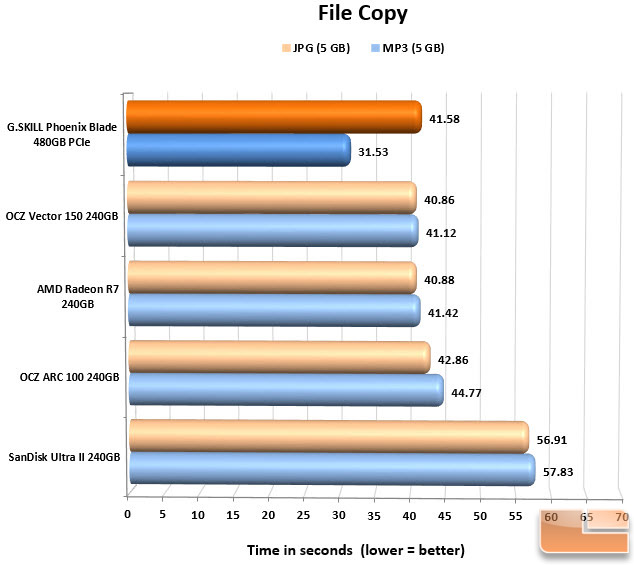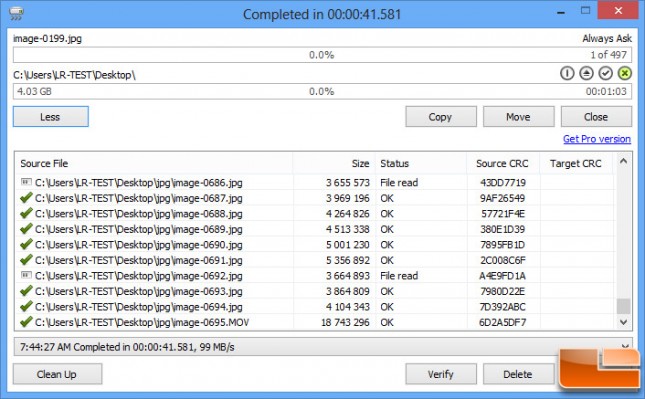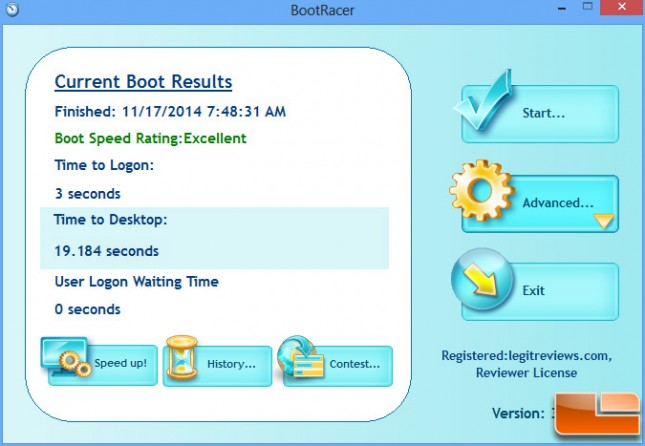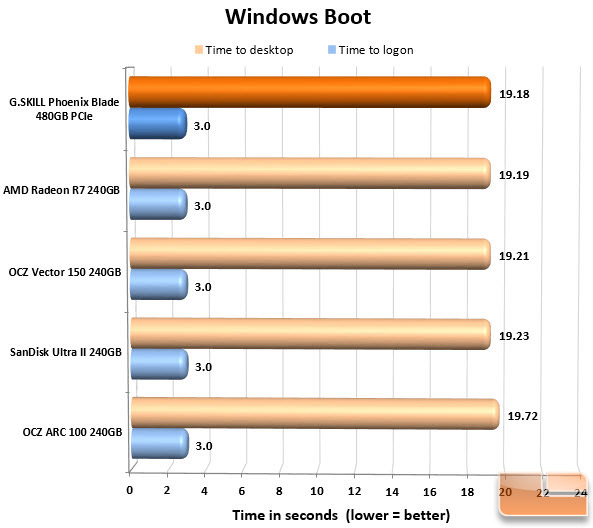G.SKILL Phoenix Blade 480GB PCIe SSD Review
Real World Copy & Boot Tests
File Copy Times Via Teracopy 2.27:
One of the most common operations performed on a PC is moving/copying files. Using a free application called Teracopy, we copied large numbers of two file types from one folder to another on the same drive. Teracopy allows us to objectively measure the time of transfer and using the same drive prevents other devices from tainting the outcome. The operation requires the drive to perform both sustained read and writes simultaneously. The first set of files is a 5GB collection of JPG’s of variable size and compression levels with a few movie (.MOV) files thrown in for good measure since most cameras now take video as well as stills. The second is a collection of MP3 files of various sizes which totals 5GB collectively. These file types were chosen due to their wide use and mixture of file sizes and compression levels.
Benchmark Results: We see a speedy result here with the JPG copies lagging behind the MP3’s which is something we see with the SandForce controllers since the level of file compression is variable.

Windows Boot Times Via BootRacer:
Windows start up/shutdown time is always something people are interested in and we haven’t done it in a while because there was little variation with the majority of the SSDs. We recently began using an application called BootRacer to objectively measure the start up times of the drives. All of the instances of Windows were identical and freshly installed with only the video driver installed.
Benchmark Results: As usual, there’s little variation in boot time and no matter how fast the drive, this is as good as it gets.



